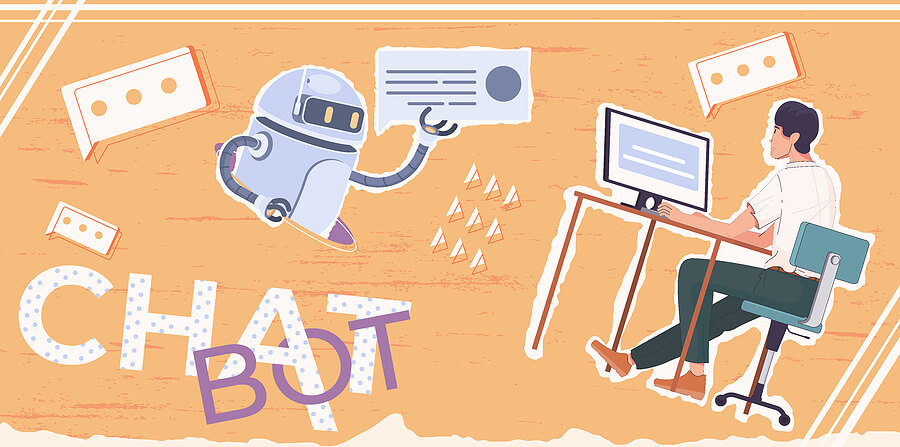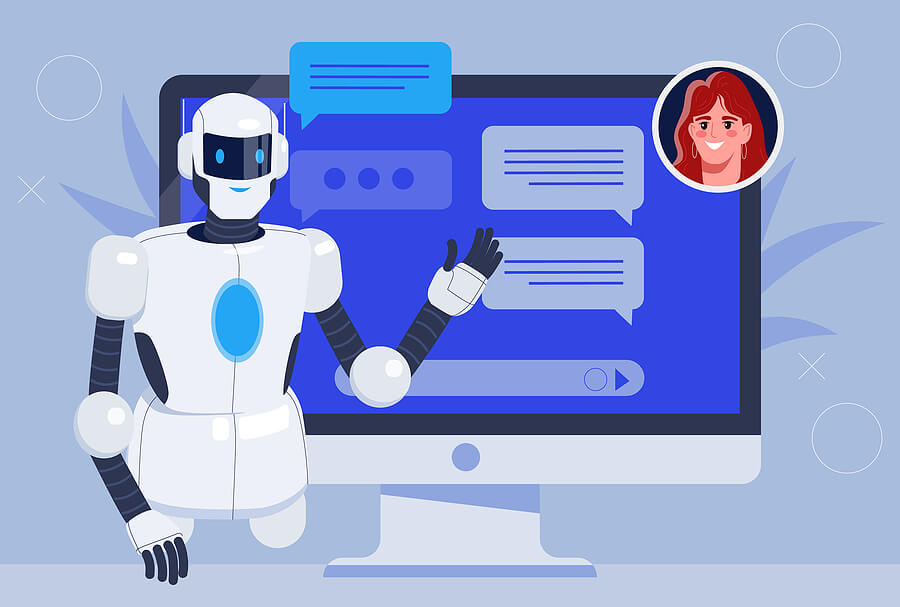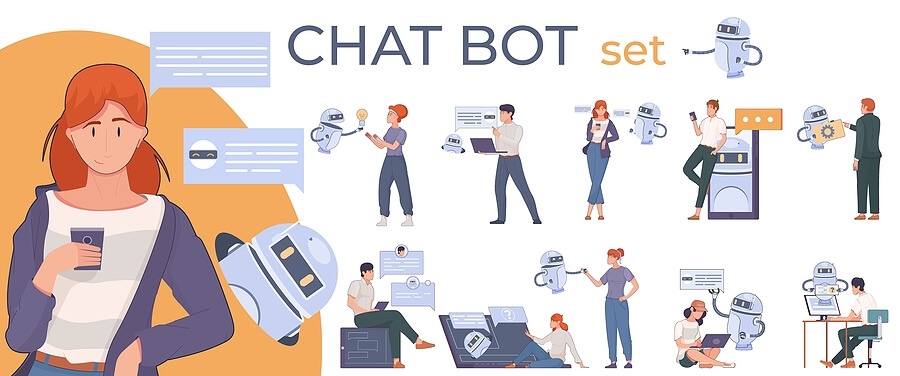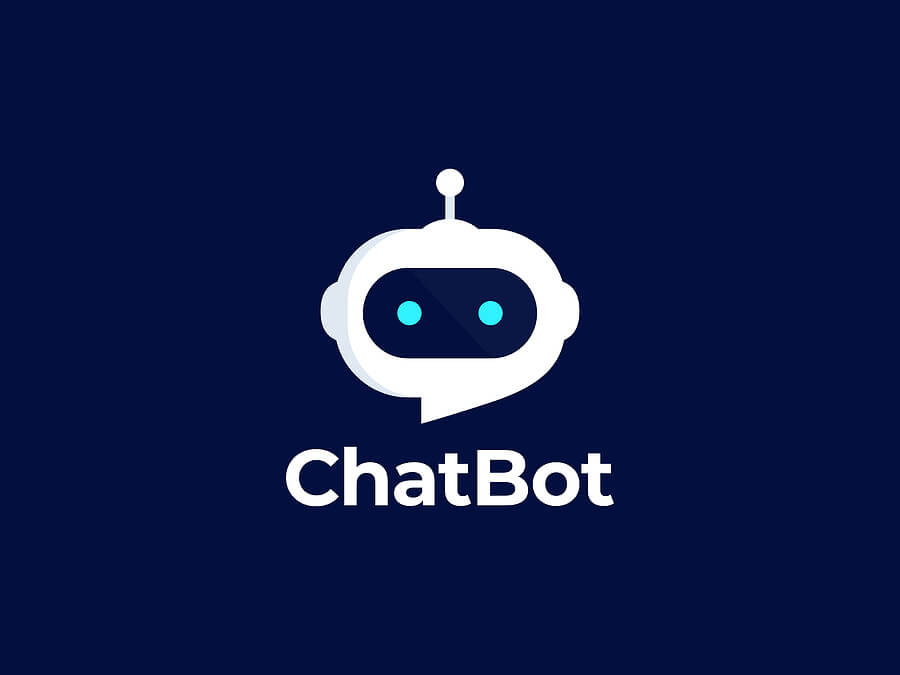What is a Chatbot? A comprehensive guide for businesses

In the rapidly evolving world of technology, businesses have moved away
from traditional methods of customer support, leading to an increased
demand for chatbots on their websites, portals, and other digital
platforms to help them achieve better customer experience.
A Chatbot is an automated computer program that stimulates human
conversations with a multitude of input and output methods, including
text, voice, touch, and gesture. They help in providing exceptional
customer service, enhance online engagement, and offer additional
support by augmenting human customer support agents with automated
technologies and artificial intelligence. Initially, chatbots were
built to serve the customer service environment. However, with the
development in the field, they are now able to play crucial roles
across multiple domains to enhance business efficiencies. Chatbots
offer businesses a cost and time-effective solution to customer
support, as they are able to attend to online customers 24/7 without
any delays. This makes the implementation of chatbot solutions
appealing, as businesses do not have to invest in manpower or financial
resources to keep employees working around the clock.
To help you better understand the importance of a chatbot and its
functioning, we have compiled a comprehensive guide. Let’s review it.
Tables of Contents
Why Chatbots?
- Cost Effective
- Boost Sales
- Helps Monitor and Analyze Customer Data
- 24/7 Availability
- Enhances Customer Engagement
- Reduce Uphold Time
- Automate Lead Qualification & Sales
- Nurture Customer Loyalty
How Does a Chatbot Function?
- Natural Language Processing (NLP)
- Natural Language Generation (NLG)
- Natural Language Understanding (NLU)
Types of Chatbots
What are the main uses of a chatbot?
Challenges of using a Chatbot
Is there a Future for Chatbots?
Why Chatbots?
For the last few years, Chatbots have become increasingly popular due
to their ability to provide an intuitive and efficient way of
interacting with online customers. From assisting customers through
their journey with the brand, to pushing relevant links, making
appointments, taking orders etc., chatbots have been empowering the
digital functioning of businesses. Subsequently, amidst the current era
of digital noise where customers are bombarded with information and
exposure, deploying chatbots can not only help navigate customers to
your websites with an improved customer experience but it comes along
with other impactful benefits for the businesses as well, such as:
A. Cost Effective
Chatbots have been proven to be an effective way of optimizing online
operational costs, as they can be easily deployed and scaled at a
fraction of the cost compared to hiring a team of trained chat agents
or developing a dedicated cross-platform application. Studies have
shown that businesses can save billions of dollars annually by reducing
costly errors caused by human error, while also allowing them to
respond to a multitude of customers simultaneously without any human
intervention. Additionally, chatbots are programmed to handle simple
and repetitive tasks, freeing up human agents to focus on more complex
conversations and service escalations.
B. Boost Sales
Chatbots are of great help when it comes to boosting sales. With a chatbot
deployed on your website, you can be assured that no lead will be
missed, as they help engage and qualify leads in real-time. Website
visitors might come from different sources but their intent is common,
i.e. they are interested in engaging with your business one way or the
other. Customer Service Chatbots help prospective customers easily find
the information or products they’re looking for and provide assistance
throughout their buying journey. This real-time customer support aids
businesses in increasing their conversion rate and sales, without
requiring a significant human effort, thus leading to seamless customer
conversions.
C. Helps Monitor and Analyze Customer Data
Chatbots are considered a marvelous source of collecting valuable customer data,
as they enable businesses to gain deep insights into customer behavior
through human-machine conversational interactions. This data can be
used to understand customer needs and sentiments more thoroughly, as
well as to improve services, products, and optimize the customer
experience. Additionally, chatbots can remember customer preferences
and offer personalized tips, helping to upsell products and services.
D. 24/7 Availability
Chatbots are available 24/7 to engage customers with instant responses to the
posed queries. Unlike humans, they don’t feel tired, sleepy or lose
focus. Thus, they help businesses conveniently provide a 24-hour
customer support for their digital clients.
E. Enhances Customer Engagement
Chatbots are found to be highly efficient in enhancing online customer
engagement with their round-the-clock, proactive conversational
customer support. Customers nowadays are technologically advanced and
aware of multiple options available to them. Thus, they want instant
responses and solutions from the businesses’ end. In this regard,
Customer Service chatbots are of great use as they help instantly
engage online engage customers, provide them with the required
information and reduce bounce rate.
F. Reduce Uphold Time
With the customer’s attention span on a constant fall, experiencing a
delay in getting the required response could cause your business a big
loss. While human agents are able to manage one chat at a time,
chatbots can efficiently respond to multiple chats at a time, providing
immediate responses, reducing the overall uphold time. This means that
while one of the website visitors is being accommodated, the other
doesn’t have to wait. He can get the required information
simultaneously without bouncing off the website. As per Forbes, around
21% of consumers see chatbots as the easiest way to contact a business.
Thus, chatbots are a smarter way to ensure that customers receive the
immediate response that they are looking for without making them wait
in a queue.
G. Automate Lead Qualification & Sales
Chatbots empower businesses to automate their sales funnel. With the use of
chatbots, businesses can prequalify leads and direct them to the right
team for further nurturing. The deployment of chatbots ensures that
online customer engagement increases and the process of lead
acquisition and qualification is running smoothly without requiring any
human intervention.
H. Nurture Customer Loyalty
Businesses can easily deliver a frictionless experience to their online
customers, with chatbot-generated instant responses synced with the
customer’s demands. Such experiences help improve customer satisfaction
and significantly impacts customer loyalty. As per Forbes, with a
global slowdown predicted to be around the corner, even a minimal 2%
increase in the customer retention rate can have a better effect on
businesses than decreasing the overall costs of the service or products
by 10%.
How Does a Chatbot Function?

Human interactions might appear simple to us but they tend to be quite
complex for any technology to engage with it independently. Chatbots
are built to streamline human interactions with machines and vice
versa. Chatbots can function in various ways, interacting with online
customers in multiple mediums. For instance, voice-based chatbot
Software use Automatic Speech Recognition (ASR) to process the voice
data into text. The text input is then put through a process of quick
analysis, and then a response that best suits the scenario is delivered
to the customer.
Here are there ways in which chatbots function, making their responses
more accurate and nuanced.
a. Natural Language Processing (NLP)
Natural Language Processing (NLP) is a subfield of artificial
Intelligence linguistics and computer science. Chatbots based on NLP
are equipped with the capability to understand the literal sense of the
conversation and automatically process, understand and respond to
customer queries. The main goal of using this technology in chatbots is
to improve human-machine communication.
b. Natural Language Generation (NLG)
Chatbots built on Natural Language Generation technique (NLG) are able to
deliver off-script responses to online customers. An NLG chatbot goes
through third-party databases, back-end systems, and data repositories
in its access to generate the most suitable answer to the user input.
Such chatbots are efficient in providing information about the weather,
medical reports, directions, historical facts, etc.
c. Natural Language Understanding (NLU)
Natural Language Understanding system helps chatbots to extract the
context and intent of the conversation. NLU takes into account various
features of the language like synonyms, phrases, lexicons, verb
placements etc., to understand the customer’s intent. Based on the
findings, the algorithms then built a seamless dialogue flow which
helps the chatbot deliver the perfect response to the human input.
Using Conversational chatbots based on the above-mentioned language
processing systems can help businesses in delivering realistic
responses to their digital customers around the clock.
Types of Chatbots
There are primarily three types of chatbots that are used by business
around the globe:
1. Rule-based Chatbots
One of the most commonly used chatbots are Rule-based chatbots. They
are often referred to as linguistic-based chatbots as well. These
advanced chatbots are responsible for delivering finely tuned and
defined conversational experiences to the online users. While they do
not have as much flexibility as other chatbots, they offer a more
controlled overview of the responses to the businesses. These chatbots
are built to follow the if/then logic in a conversational flow, making
them the most viable option for corporate firms looking to create
conversational FAQ bots on their channels like Facebook Messenger or
WhatsApp for Business etc.,
2. Machine Learning Chatbots Or AI Chatbots

Artificially Intelligent chatbots are the more advanced and complex
versions of a chatbot. They offer much more flexibility and
customization as compared to the other types of chatbots. Artificially
Intelligent chatbots are more task-oriented chatbots, and focus on
providing personalized customer experience to the users. The AI
chatbots tend to use predictive intelligence and analytics to provide a
holistic conversational experience to the users based on their
preferences and stored data history. With the help of statistical
algorithms and Natural Language Processing system, Artificially
Intelligent chatbots are said to be one of the most powerful tools for
businesses looking to have an advanced digital assistant on their
hands.
3. Hybrid Chatbots
A hybrid chatbot solution combines the powers of chatbots and human
agents to handle customer inquiries in real time. It uses
pre-programmed rules and machine learning to provide automated
responses to simple queries via chatbots, while complex ones are
escalated to human agents for detailed assistance.
What are the main uses of a chatbot?
With the advanced technological development in the field and the
availability of customizable configurations, chatbots can be seen to
have multiple uses across varying industries. Some of the popularly
used configurations and main uses of chatbots are shared below:
a. FAQs Chatbot
An FAQ chatbot is used to help provide website visitors with predefined
knowledge repositories to fetch the required answers and push relevant
links. These chatbots are efficient to be used in almost all
industries, as their main goal is to engage the customer and provide
them with the relevant available information.
b. E-commerce Chatbot
In the post-COVID world, businesses are thriving on e-Commerce
platforms because of easy access, digital availability, and real-time
product information. E-commerce chatbots provide real-time inventory
updates, information about new products, promotions, and discounts and
guide them through the checkout process seamlessly. These chatbots
successively help businesses offer 24/7 customer support, enhance
customer engagement and close more sales.
c. Welcome Chatbot
Deployment of a welcome chatbot on your website is like setting up a front desk at your shop, to greet customers and welcome them inside. A welcome chatbot is programmed to proactively greet every website visitor. As the name suggests, an appointment-setting chatbot allows businesses to streamline the process of booking appointments. These chatbots gather the required information from the prospects, provide them with the required information, if needed, and allow them to set up a meeting at their convenience. Businesses can either expand the scope of work to get more details from the visitors, and continue the chat, or can have a human take over the chats from the welcome bot at any predefined point.
Challenges of using a Chatbot
Like any other technology, Chatbots, also have certain limitations. For
instance, even with Natural Language Processing, they might not fully
understand a customer’s input, and might give illogical answers.
Additionally, the range of questions that many chatbots can answer is
constrained. This could cause annoyance because the feedback is
presented in a rather generic manner without any sign of sympathy or
emotion. Chatbots can be costly to build and operate, especially if
they need to be modified and updated frequently. This is in addition to
customers being dissatisfied that they cannot speak to a live person.
Is there a Future for Chatbots?
Yes, there surely is a bright future for chatbots. Fortunately, it is
quite evident from their extensive use that chatbots are here to stay
for long. These automated programs are successfully changing the ways
in which businesses understand, engage, and communicate with their
online customers. They have not only enabled businesses to deliver a
more personalized customer experience but have also helped them in
saving money, generating better leads, closing more sales, and
nurturing a clientele of loyal customers. The potential to incorporate
chatbots throughout a company’s website, app, and social media
platforms is massive, making their future in the tech industry bright
and shiny.

Get the Best Chatbot For Your Business
Book a demo with us and let our expert team customize a chatbot
configuration for your business that truly engages your audience.


